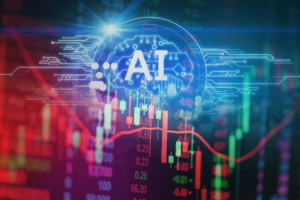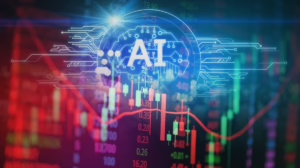From Algorithms to Automation: The True Meaning of Artificial Intelligence
Introduction
Artificial Intelligence (AI) has rapidly emerged as a transformative force in various sectors, fundamentally reshaping how we interact with technology. From simple algorithms designed to perform specific tasks to complex automated systems that can learn and adapt, the spectrum of AI is vast and varied. This article delves into the facets of artificial intelligence, discussing its evolution, technological underpinnings, implications for various industries, and the ethical considerations arising from its continued integration into daily life.
The Evolution of Artificial Intelligence
Early Beginnings
The concept of artificial intelligence dates back to ancient myths and stories of mechanical beings endowed with intelligence. However, the formal field of AI was established during the 1956 Dartmouth Conference, where pioneers like John McCarthy, Marvin Minsky, and Allen Newell laid the groundwork for what would become a revolutionary field of study.
The Birth of Algorithms
The early projects in AI primarily focused on crafting algorithms—step-by-step procedures for calculations and problem-solving. Simple rule-based systems and decision trees formed the backbone of these early AI models. They operated under predefined rules, making decisions based on logical conclusions. This initial phase of AI was limited by the technology of the time, reliant on manual input and lacking the capability to learn from data.
The Shift to Machine Learning
With the advent of higher computational power and the availability of large datasets, a paradigm shift occurred in the late 20th and early 21st centuries. This shift led to machine learning, a subset of AI where systems are trained on data rather than programmed with specific rules. Algorithms could now learn patterns, make predictions, and improve their performance over time.
Modern machine learning techniques, such as supervised learning, unsupervised learning, and reinforcement learning, have further pushed AI’s capabilities. One of the most influential developments during this time was deep learning, which employs neural networks to analyze vast amounts of data and extract intricate patterns.
Understanding Automation
Defining Automation
Automation refers to the use of technology to perform tasks without human intervention. In the context of AI, automation takes on a new meaning—machines equipped with AI can not only perform tasks but also learn from their experiences, adapt to new scenarios, and optimize processes.
The Automation Spectrum
Automation can be categorized into several tiers, ranging from fully manual processes to fully autonomous systems:
- Manual Automation: Human workers performing tasks with minimal technological assistance.
- Semi-Automation: Technology aids humans, such as automated assembly lines or data entry software.
- Full Automation: Automated systems operate independently, often seen in industries such as manufacturing, logistics, and customer service, through chatbots and robotic assistants.
The Role of AI in Automation
AI enhances automation by introducing cognitive capabilities to machines. For instance, AI-powered robots can analyze their environment and make real-time decisions, while chatbots utilize natural language processing (NLP) to understand and respond to customer inquiries accurately. This integration of AI with automation marks a notable evolution, creating systems that can learn, adapt, and improve autonomously.
The True Meaning of Artificial Intelligence
More Than Just Data Processing
While many associate AI primarily with data processing capabilities, its true essence lies in its ability to simulate human-like cognitive functions such as reasoning, learning, perception, and problem-solving. AI encompasses a range of technologies, including:
- Natural Language Processing (NLP): This allows machines to understand and generate human language. Applications include chatbots, language translation, and sentiment analysis.
- Computer Vision: This enables machines to interpret visual information, which is crucial in areas like autonomous vehicles and facial recognition systems.
- Robotics: AI-driven robotics combines physical machines with intelligent decision-making capabilities, leading to innovations in manufacturing, healthcare, and even domestic assistants.
Human-AI Collaboration
The integration of AI into the workplace does not signal a displacement of human workers. Rather, it fosters a new form of collaboration between humans and machines. AI can augment human abilities, allowing workers to focus on higher-level decision-making and creative aspects of their jobs.
For instance, in the medical field, AI algorithms can analyze massive amounts of patient data to identify trends and assist in diagnosis. However, the human touch remains essential, as doctors must interpret the data, consider ethical implications, and make final decisions based on a holistic understanding of their patients.
The Spectrum of Intelligence
It is crucial to differentiate between various types of AI, as not all systems exhibit the same level of intelligence:
- Narrow AI: This refers to AI systems designed for specific tasks, such as facial recognition software or recommendation engines. These systems are highly effective at their designated functions but lack general intelligence.
- General AI: While still largely theoretical, general AI would have the ability to understand and learn any intellectual task that a human can perform. Achieving general AI presents significant challenges and remains a long-term aspiration in the field.
Applications of AI Across Industries
Healthcare
AI is revolutionizing healthcare by enhancing diagnostic processes, personalizing treatment, and optimizing operational efficiency. Machine learning algorithms analyze medical imaging results, potentially improving accuracy in cancer detection and other conditions. Additionally, AI systems can tailor treatment plans based on genetic factors and even predict patient outcomes based on historical data.
Finance
In the finance sector, AI powers algorithmic trading, risk assessment, fraud detection, and personalized banking experiences. AI systems can analyze trends and market fluctuations at speeds unattainable by human traders. Moreover, chatbots offer customer support for banking services, enhancing user experience through 24/7 availability.
Retail
AI transforms the retail landscape through personalized marketing, inventory management, and enhanced customer experiences. E-commerce platforms utilize recommendation algorithms to suggest products based on user behavior. In-store, AI-driven inventory management systems optimize stock levels and reduce waste, ensuring that popular products are always available.
Transportation
The transportation industry is on the brink of a major transformation with the development of autonomous vehicles. AI systems process data from sensors and cameras, enabling cars to navigate and respond to their environments. While challenges remain in safety and public acceptance, the potential for reduced traffic accidents and enhanced mobility is significant.
Ethical Considerations of AI
Bias and Discrimination
One of the critical ethical concerns surrounding AI is bias. Algorithms trained on historical data may inadvertently perpetuate biases present in that data, leading to discriminatory practices. For example, AI systems used in hiring processes may favor candidates from certain demographics based on historical hiring patterns.
Privacy and Security
AI systems often rely on vast amounts of personal data, raising significant privacy concerns. Users may be unaware of how their data is collected, processed, and utilized, leading to potential breaches of trust. Ensuring the transparency of AI systems and implementing robust data protection measures are essential to addressing these concerns.
Job Displacement vs. Job Creation
As automation-driven by AI continues to reshape industries, concerns about job displacement emerge. While certain jobs may become obsolete, new roles centered around AI development, maintenance, and oversight will likely arise. Preparing the workforce for this transition through reskilling and education is necessary for a balanced and equitable future.
Accountability and Decision-Making
As AI systems increasingly make decisions that affect individuals and society, questions about accountability arise. Determining who is responsible when an AI system makes a mistake or causes harm can be complex. Establishing clear guidelines and regulations for AI deployment is essential to ensuring ethical accountability.
The Future of Artificial Intelligence
Continued Advancements
The future of AI holds immense potential as technology continues to evolve. Research in areas like quantum computing and neuromorphic computing may pave the way for unprecedented advancements, enabling AI systems to process and analyze data in real time more efficiently.
Societal Impact
The widespread adoption of AI will shape society in ways we are only beginning to understand. From transforming education through personalized learning experiences to addressing global challenges such as climate change, AI has the potential to catalyze positive change.
Ethics and Regulations
As AI becomes more integrated into our lives, the need for ethical guidelines and regulatory frameworks becomes increasingly urgent. Policymakers and technologists must collaborate to create standards that promote responsible AI development and deployment. Encouraging transparency, fairness, and accountability will be vital in gaining public trust and acceptance.
Conclusion
Artificial intelligence is more than just a collection of algorithms and automated systems; it represents a paradigm shift in human interaction with technology. As we continue to explore the possibilities of AI, it is essential to remain vigilant about the ethical implications and societal impacts that accompany this remarkable technological advancement.
Navigating the complexities of AI requires collaboration across disciplines, a commitment to responsible practices, and an understanding of the broader context in which these technologies operate. By harnessing the potential of AI responsibly, we can pave the way for a future where technology enhances human capabilities and contributes to the betterment of society as a whole.
References
- Smith, J. (2021). The Evolution of AI: From Basics to Algorithms. Journal of Artificial Intelligence Research.
- Johnson, L. (2020). Understanding Machine Learning and its Applications. AI & Society.
- Brown, A. (2022). AI in Healthcare: A Revolution in Patient Care. Health Informatics Journal.
- Taylor, M. (2019). The Financial Revolution: AI in Banking and Finance. Finance and Technology Review.
- Davis, R. (2023). Ethical Considerations in AI Development. Journal of Technology Ethics.
This article outlines the broad arc of artificial intelligence, from its inception through its various applications and the ethical considerations it provokes. If you need more details on a particular section or additional aspects covered, please let me know!


























Add Comment